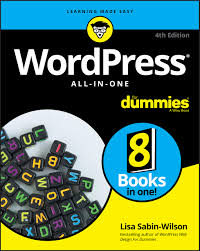This white paper provides a comprehensive guide to using WordPress, a popular and user-friendly Content Management System (CMS) for creating and managing websites.
WordPress for Dummies: A Comprehensive Guide
This white paper provides a comprehensive guide to using WordPress, a popular and user-friendly Content Management System (CMS) for creating and managing websites.
1. Understanding WordPress
- What is WordPress?
- WordPress is an open-source CMS that empowers users to create and manage websites without extensive technical knowledge.
- It's highly versatile, suitable for blogs, businesses, portfolios, online stores, and more.
- Key Features:
- User-friendly interface: Easy-to-use dashboard for content creation and management.
- Customization: Highly customizable with themes and plugins to tailor your website's appearance and functionality.
- SEO-friendly: Built-in SEO tools and features to improve search engine visibility.
- Large Community and Support: A vast community of developers and users provides extensive support and resources.
- Security: Regular security updates to protect your website from vulnerabilities.
- E-commerce Functionality: Integrate e-commerce features with plugins like WooCommerce to sell products and services online.
2. Getting Started with WordPress
- Choosing a Hosting Provider: Select a reliable hosting provider that offers WordPress hosting services.
- Installing WordPress: Follow the installation instructions provided by your hosting provider.
- Accessing the WordPress Dashboard: Log in to your WordPress dashboard to begin customizing your website.
3. Creating Content
- Pages: Create static pages for your website, such as "About Us," "Contact," and "Services."
- Posts: Create blog posts to share news, articles, and other content.
- Media Library: Upload and manage images, videos, and other media files.
- Categories and Tags: Organize your content using categories and tags for better navigation and search.
4. Customizing Your Website
- Themes: Choose and customize a theme to change the overall look and feel of your website.
- Plugins: Extend the functionality of your website by installing and configuring plugins (e.g., SEO, contact forms, social media integration).
- Widgets: Add widgets to sidebars and other areas to display content like recent posts, archives, and social media feeds.
5. SEO and Marketing
- Optimize for Search Engines (SEO): Utilize WordPress's built-in SEO features and install plugins like Yoast SEO to improve search engine rankings.
- Social Media Integration: Connect your website to social media platforms to increase visibility and engagement.
- Email Marketing: Integrate email marketing tools to build your email list and engage with subscribers.
6. Security and Maintenance
- Keep WordPress Updated: Regularly update WordPress, themes, and plugins to ensure security and compatibility.
- Back Up Your Website: Regularly back up your website to prevent data loss.
- Monitor Website Performance: Monitor website traffic, performance, and security.
7. Advanced WordPress Techniques
- Customizing the WordPress Loop: Learn how to modify the WordPress loop to display content in custom ways.
- Creating Custom Post Types: Create custom post types to organize and display unique types of content.
- Developing Custom Themes and Plugins: For more advanced users, learn to develop custom themes and plugins to extend WordPress's functionality.
Resources:
- WordPress.org: The official WordPress website.
- WordPress Codex: The official WordPress documentation.
- WPBeginner: A comprehensive WordPress resource.
- Yoast SEO: A popular WordPress SEO plugin.
- WooCommerce: A powerful e-commerce plugin for WordPress.
- Biz Development https://wordpress.com/go/website-building/create-business-website/
Conclusion
WordPress is a powerful and user-friendly platform that can be used to create a wide variety of websites. By following these guidelines and exploring the resources available, you can effectively use WordPress to build a successful online presence.
Disclaimer: This information is provided for general knowledge and informational purposes only. It does not constitute professional advice. Contact keencomputer.com for details.
This guide provides a basic introduction to WordPress. For more in-depth information, refer to the "WordPress For Dummies" book and other recommended resources.
